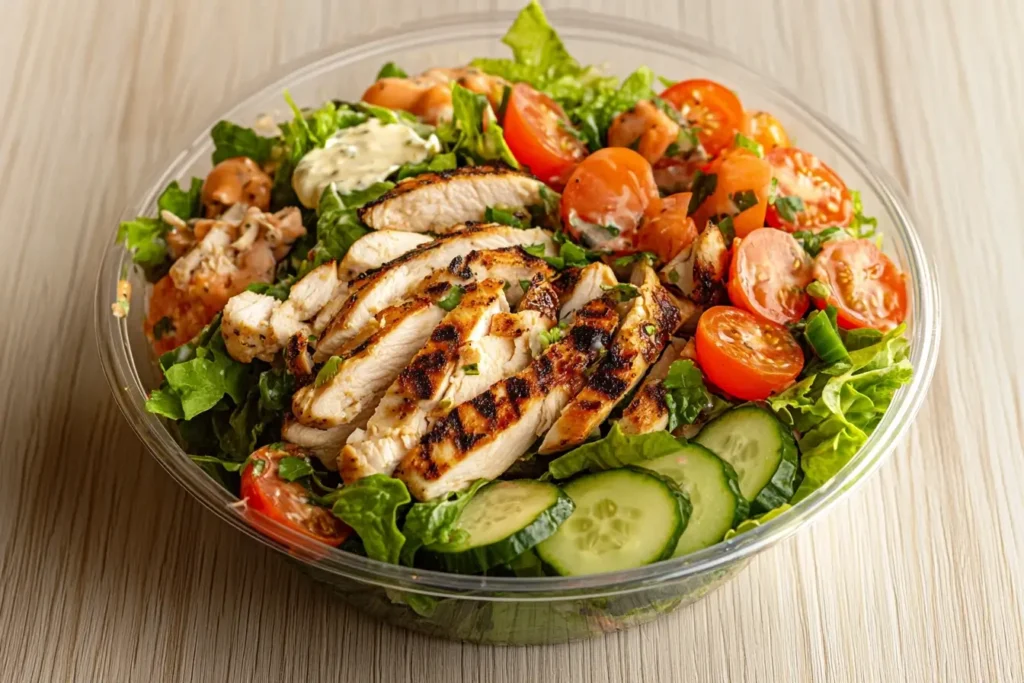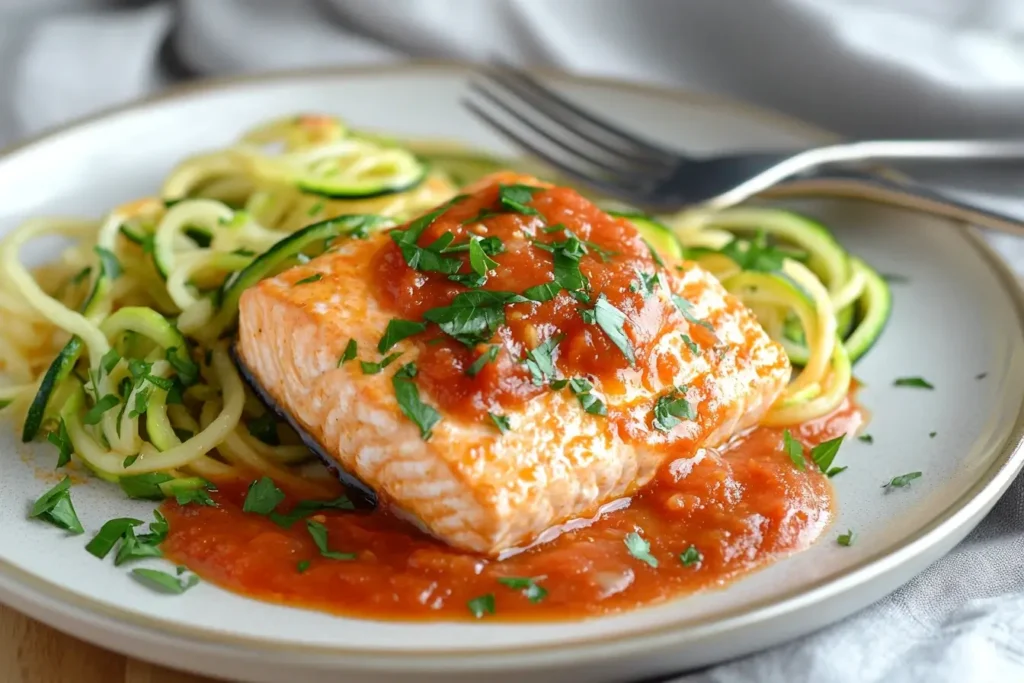Eating after bariatric surgery comes with unique challenges and opportunities. Bariatric recipes are specifically tailored to meet the nutritional needs of individuals who have undergone weight-loss surgery, ensuring every bite is both nourishing and enjoyable. From high-protein breakfasts to comforting dinners, these recipes strike the perfect balance between flavor and functionality, making it easier to stick to post-surgery guidelines.
Introduction to Bariatric Recipes
Bariatric recipes are more than just meals—they’re a lifestyle. Designed to prioritize nutrition, portion control, and ease of digestion, these recipes help bariatric patients maintain their health while enjoying a variety of foods.
Importance of Tailored Recipes for Bariatric Patients
After bariatric surgery, patients undergo significant changes in their eating habits. With a reduced stomach size and modified digestion, it’s essential to choose foods that are easy to digest while meeting high nutritional standards. Tailored recipes:
- Prevent discomfort or complications like dumping syndrome.
- Help patients hit daily protein, vitamin, and nutrient goals.
- Support long-term weight-loss success by promoting healthy eating habits.
Benefits of Following a Bariatric-Friendly Diet
Bariatric-friendly meals not only provide essential nutrients but also help patients develop portion control and mindful eating practices. Benefits include:
- Improved digestion: Small, nutrient-dense meals reduce the risk of post-surgery discomfort.
- Sustained weight loss: By focusing on high-protein, low-carb meals, patients are less likely to overeat or feel hungry between meals.
- Versatility: Bariatric recipes can be easily adapted for various dietary preferences, such as vegetarian, gluten-free, or dairy-free diets.
What Are Bariatric Meals?
Bariatric meals are designed to meet the unique needs of post-surgery patients. They focus on:
- Protein as the priority: Foods like lean meats, eggs, and Greek yogurt are staples.
- Portion control: Meals are small but nutrient-packed, ensuring they fit comfortably within the reduced stomach capacity.
- Low sugar and low fat: These recipes avoid empty calories and prevent digestive issues like dumping syndrome.
Key Principles of Bariatric Cooking
Bariatric cooking isn’t just about preparing meals; it’s about following specific principles to ensure each dish supports your health goals. These guidelines prioritize nutrition, portion control, and ease of digestion, making them essential for post-surgery success.
Portion Control for Post-Surgery Needs
After bariatric surgery, portion sizes must be drastically reduced to accommodate the smaller stomach size. However, this doesn’t mean sacrificing satisfaction or nutrients. In fact, proper portion control can help ensure you meet your nutritional needs while feeling full and satisfied. Here’s how portion control is achieved:
- Smaller servings: Meals are typically measured in ounces or cups, with a focus on delivering maximum nutrition in minimal portions. For example, a serving of protein might be just 2–4 ounces, depending on your stage of recovery.
- Measuring tools: Using food scales or portion-control plates can help ensure you stick to recommended serving sizes. Additionally, these tools make it easier to avoid accidentally overeating.
- Slow eating: Eating slowly allows patients to recognize fullness and avoid overeating, which can lead to discomfort. By pausing between bites, you give your body time to signal when it’s satisfied.
High Protein, Low Carb Focus
Protein is the cornerstone of bariatric meals, as it supports muscle maintenance, promotes satiety, and aids in healing after surgery. To achieve these benefits, you’ll need to prioritize certain key principles:
- Protein-rich foods first: Always prioritize lean meats, fish, eggs, tofu, and low-fat dairy during meals. This ensures your body receives the nutrients it needs for recovery and energy.
- Carbohydrates in moderation: Opt for complex carbs, such as whole grains and vegetables, while avoiding refined sugars and starches. For instance, include small portions of quinoa or steamed broccoli to complement your protein.
- Protein supplements: Whey protein powders or shakes may be used to meet daily protein goals, especially during the early recovery stages. Furthermore, these supplements can provide convenience when cooking is not an option.
Tips for Achieving Balanced Nutrition
While protein takes center stage, a balanced bariatric meal should also include other essential nutrients:
- Fiber: Include small portions of high-fiber foods like cooked vegetables, as these aid digestion and prevent constipation.
- Healthy fats: Incorporate fats from sources like avocados, olive oil, and nuts in limited amounts.
- Micronutrients: Due to the reduced food intake, it’s important to consume nutrient-dense foods rich in vitamins and minerals. Supplements are often recommended by healthcare providers.
Avoiding Common Ingredients That May Cause Discomfort
Certain foods and ingredients may be difficult for bariatric patients to tolerate, especially in the months following surgery. These include:
- Sugary foods: Can cause dumping syndrome, a condition that results in nausea, cramping, and diarrhea.
- Carbonated beverages: May cause bloating or discomfort.
- Tough-to-digest items: Raw vegetables, seeds, and fibrous meats should be avoided or consumed with caution.
By following these principles, bariatric patients can enjoy a variety of meals while staying on track with their health goals.
Breakfast Recipes for Bariatric Patients

Breakfast is an essential meal for bariatric patients, as it kickstarts the metabolism and provides the energy needed to start the day. The following breakfast recipes focus on high protein, small portions, and easily digestible ingredients.
High-Protein Breakfast Ideas
- Greek Yogurt Parfait with Berries and Nuts
- Ingredients: ½ cup of unsweetened Greek yogurt, a handful of fresh berries (such as blueberries or strawberries), and a sprinkle of chopped almonds or walnuts.
- Why it’s great: Greek yogurt is packed with protein, and the berries add a touch of natural sweetness. The nuts provide healthy fats and a satisfying crunch.
- Scrambled Egg Muffins with Vegetables
- Ingredients: Whisked eggs mixed with diced spinach, bell peppers, and a pinch of shredded low-fat cheese, baked in muffin tins.
- Why it’s great: These egg muffins are portion-controlled and easy to make ahead for busy mornings. Each muffin is packed with protein and vegetables, providing a balanced start to the day.
Quick and Easy Bariatric Recipes for Breakfast
For bariatric patients, starting the day with nutrient-packed options is essential. Bariatric recipes for breakfast should focus on high protein and ease of preparation to support a healthy lifestyle.
Protein Shakes and Smoothies
- Blend a scoop of whey protein powder with almond milk, a frozen banana, and a teaspoon of peanut butter for a nutrient-dense shake. Alternatively, for a lower-carb option, replace the banana with spinach or cucumber. Not only are these shakes quick to make, but they are also an excellent way to start the day with a protein boost.
Cottage Cheese and Sliced Peaches
- Cottage cheese is high in protein and pairs perfectly with soft, ripe peaches for a sweet and savory combination. Moreover, this option provides a balance of flavors and textures that can satisfy different cravings. As an added benefit, it requires no cooking, making it an ideal choice for busy mornings.
Making Breakfast Simple and Nutritious
Bariatric breakfasts don’t need to be complicated. Focus on meals that are quick to prepare and easy to digest. Consider:
- Preparing ingredients in advance, such as washing and cutting fruits or cooking egg muffins in batches.
- Keeping portion sizes small and using measuring cups to ensure you’re not overeating.
- Avoiding high-sugar breakfast options like cereal or pastries, which can cause energy crashes and discomfort.
By focusing on high-protein and nutrient-packed options, bariatric patients can start their day feeling energized and satisfied.
Lunch Recipes for Bariatric Patients
Lunch provides an opportunity to incorporate lean proteins, fresh vegetables, and low-carb ingredients into a satisfying yet nutrient-dense meal. These recipes focus on keeping portions small and balanced while avoiding ingredients that may cause discomfort.

Low-Carb Salad Options
- Grilled Chicken Caesar Salad with Light Dressing
- Ingredients: Grilled chicken breast, chopped romaine lettuce, grated Parmesan cheese, and a drizzle of low-fat Caesar dressing.
- Why it’s great: This classic salad is high in protein and low in carbs, making it an ideal bariatric-friendly lunch. To add variety, substitute chicken with grilled shrimp or turkey.
- Tuna Salad with Greek Yogurt Instead of Mayo
- Ingredients: Canned tuna (packed in water), a dollop of plain Greek yogurt, diced celery, and a squeeze of lemon juice.
- Why it’s great: Using Greek yogurt instead of mayo reduces calories and adds extra protein while maintaining a creamy texture.
Wraps and Bowls
- Turkey Lettuce Wraps with Hummus: Spread a thin layer of hummus on large lettuce leaves, then top with sliced turkey, shredded carrots, and diced cucumbers. Roll up tightly for a crunchy, handheld meal.
- Quinoa and Roasted Vegetable Bowls: Combine a small portion of cooked quinoa with roasted zucchini, eggplant, and bell peppers. Add a sprinkle of feta cheese for extra flavor.
Tips for Preparing Bariatric Lunches
- Keep it soft and easy to digest: Grilled or baked proteins are gentler on the stomach than fried options, and cooked vegetables are easier to tolerate than raw ones.
- Control portions: Serve meals in small containers to avoid overeating. Bento boxes with divided compartments are excellent for pre-portioning lunches.
- Stay hydrated: While it’s important to wait 30 minutes before or after eating to drink water, keeping hydrated throughout the day helps prevent post-surgery dehydration.
Lunches that are high in protein and low in processed carbs help sustain energy and avoid mid-afternoon hunger pangs, making them a cornerstone of a successful bariatric diet.
Dinner Recipes for Bariatric Patients

Dinner is an opportunity to enjoy a satisfying meal that’s rich in protein and nutrients while sticking to portion control. The following recipes focus on easy-to-digest ingredients, bold flavors, and bariatric-friendly cooking techniques.
Protein-Rich Dinners
- Baked Salmon with Steamed Broccoli
- Ingredients: A small fillet of salmon seasoned with lemon, garlic, and herbs, served with lightly steamed broccoli.
- Why it’s great: Salmon is rich in omega-3 fatty acids and protein, while broccoli provides fiber and essential vitamins. Both are gentle on the stomach and easy to prepare.
- Lean Turkey Meatballs with Zoodles (Zucchini Noodles)
- Ingredients: Ground turkey mixed with egg, breadcrumbs (optional), and Italian spices, baked until golden. Serve over zucchini noodles with a light marinara sauce.
- Why it’s great: This dish mimics the comforting feel of spaghetti and meatballs while keeping carbs low and protein high.
Comfort Foods Made Healthy
- Bariatric-Friendly Lasagna with Eggplant Layers: Substitute traditional pasta sheets with thin slices of eggplant. Layer with lean ground beef or turkey, marinara sauce, and low-fat ricotta cheese for a lighter, protein-packed version of this classic dish.
- Low-Carb Chicken Stir-Fry: Use diced chicken breast, broccoli, bell peppers, and snap peas, stir-fried in a light soy sauce and sesame oil mixture. Serve over cauliflower rice for a complete meal.
Cooking Tips for Bariatric-Friendly Dinners
- Choose lean cuts of meat: Focus on lean proteins like chicken breast, turkey, fish, and plant-based options like tofu.
- Avoid heavy sauces: Use light marinades or dressings to flavor your dishes instead of creamy or high-fat sauces that may cause discomfort.
- Soft and moist textures: Overly dry foods can be hard to tolerate. Use cooking methods like baking, steaming, or slow cooking to retain moisture in your meals.
By prioritizing protein-rich and low-carb ingredients, bariatric-friendly dinners ensure you’re full and satisfied while staying aligned with post-surgery guidelines.
Snack and Appetizer Ideas for Bariatric Patients
Snacks and appetizers play an important role in a bariatric diet, helping to maintain energy levels and prevent hunger between meals. These ideas focus on high-protein, low-carb options that are easy to prepare and portion-controlled.
Quick and Healthy Snack Options
- Deviled Eggs Made with Greek Yogurt
- Ingredients: Hard-boiled eggs, Greek yogurt, mustard, and a dash of paprika for garnish.
- Why it’s great: Using Greek yogurt instead of mayo makes this a high-protein, low-fat snack that’s easy to prepare and portion.
- Mini Bell Peppers Stuffed with Cream Cheese and Turkey
- Ingredients: Small bell peppers halved and filled with a mix of light cream cheese and diced turkey slices.
- Why it’s great: These colorful, bite-sized snacks are packed with protein and provide a satisfying crunch.
High-Protein Energy Bites
- Peanut Butter Energy Bites: Mix 1 tablespoon of sugar-free peanut butter with protein powder, oats, and a drizzle of honey. Roll into small balls for a grab-and-go snack.
- Roasted Chickpeas: Toss canned chickpeas with olive oil, garlic powder, and smoked paprika, then roast until crispy. A great substitute for traditional chips, these provide fiber and protein.
Appetizers for Special Occasions
- Turkey Roll-Ups: Thinly sliced turkey wrapped around low-fat cheese sticks or cucumber spears for a low-carb, protein-packed finger food.
- Caprese Skewers: Small skewers with mozzarella balls, cherry tomatoes, and basil leaves, drizzled with balsamic vinegar.
Tips for Bariatric Snacking
- Portion carefully: Even snacks should be portion-controlled to avoid overeating. Use small containers or snack-size bags.
- Avoid mindless eating: Pay attention to hunger cues, and avoid eating snacks while distracted by TV or other activities.
- Choose protein first: Always prioritize protein-rich snacks to help you meet your daily goals.
With these snack and appetizer ideas, bariatric patients can enjoy tasty, nutrient-dense options between meals without compromising their diet.Desserts for Bariatric Patients
Desserts can still be enjoyed after bariatric surgery, as long as they are portion-controlled, low in sugar, and high in protein. These bariatric-friendly dessert options are satisfying while keeping your nutritional goals in mind.
Delicious High-Protein Desserts in Bariatric Recipes
Sugar-Free Cheesecake Bites
- Ingredients: A mix of low-fat cream cheese, Greek yogurt, sugar-free sweetener, and vanilla extract, baked in mini muffin tins with almond flour crusts.
- Why it’s great: These bite-sized treats are rich, creamy, and low in carbs. Additionally, they provide a satisfying dessert option without the risk of overindulgence. For those who crave sweetness, this dessert is a perfect bariatric-friendly choice that doesn’t compromise on flavor.
Low-Carb Chocolate Mousse
- Ingredients: Blend sugar-free cocoa powder, unsweetened almond milk, and whipped Greek yogurt to create a light and airy mousse.
- Why it’s great: This dessert is high in protein, low in sugar, and incredibly easy to make in just minutes. Moreover, it’s a great way to enjoy a chocolate treat while staying within your dietary guidelines. As an added bonus, it requires minimal preparation, making it an ideal choice for busy days.
Fruity Options for a Natural Sweet Treat
- Berry Chia Pudding: Mix unsweetened almond milk, chia seeds, and a handful of berries. Let it sit overnight in the fridge to create a pudding-like consistency.
- Baked Apple with Greek Yogurt: Core a small apple, sprinkle with cinnamon, and bake until soft. Top with a dollop of Greek yogurt for a sweet and healthy treat.
Tips for Enjoying Bariatric Desserts
- Keep portions small: Desserts should remain a treat, not a meal. Limit yourself to a few bites or a small serving.
- Use sugar-free sweeteners: Opt for alternatives like stevia or monk fruit to reduce calorie intake and prevent sugar spikes.
- Focus on protein: Incorporate high-protein ingredients like Greek yogurt, cottage cheese, or protein powders to ensure desserts are both enjoyable and nutritious.
By choosing desserts carefully and keeping portion sizes in check, bariatric patients can indulge their sweet tooth without straying from their health goals.
Meal Prep Tips for Bariatric Recipes
Meal prepping is a valuable strategy for bariatric patients to ensure they stick to their dietary guidelines while saving time and effort during busy weeks. With careful planning, it’s easier to maintain portion control, meet protein goals, and avoid unhealthy food choices.
Planning Meals to Save Time and Effort
- Create a Weekly Menu: Plan your meals and snacks for the week ahead. Include breakfast, lunch, dinner, and snacks to avoid last-minute decisions.
- Batch Cooking: Prepare larger quantities of bariatric-friendly recipes, such as soups, casseroles, or egg muffins, and portion them into individual servings for the week.
- Use a Grocery List: Write a detailed grocery list based on your planned meals to ensure you buy only what’s needed.
Portioning Meals for Easy Grab-and-Go Options
- Invest in Small Containers: Use bento boxes, meal prep containers, or snack-size bags to portion out individual servings. This makes it easy to grab the right amount without over-serving yourself.
- Label and Date: Mark each container with the meal name and preparation date to keep track of freshness.
- Freeze Extras: If you’ve prepared more than you can eat in a few days, freeze portions for later use. Foods like soups, stews, and meat-based dishes freeze particularly well.
Choosing the Right Tools for Bariatric Meal Prep
- Food Scale: Essential for accurately measuring portions of protein, carbs, and fats.
- Measuring Cups and Spoons: These help ensure you stay within your portion limits, especially for high-calorie items like nuts or oils.
- Blender or Food Processor: Useful for making smoothies, pureed soups, or high-protein sauces.
Sticking to Bariatric Guidelines While Prepping
- Focus on protein-first recipes that include lean meats, eggs, or plant-based proteins.
- Incorporate soft or moist textures to ensure the meals are gentle on the digestive system.
- Avoid adding high-sugar or high-fat ingredients to keep meals in line with bariatric guidelines.
Meal prepping not only simplifies your day-to-day routine but also helps you stay consistent with your bariatric diet, ensuring that every meal is as nutritious and convenient as possible.
Common Challenges and Solutions for Bariatric Patients
Adapting to life after bariatric surgery can come with its own set of challenges, particularly when it comes to maintaining dietary guidelines. Fortunately, with the right strategies, these obstacles can be managed effectively to ensure long-term success.
Dealing with Food Intolerance Post-Surgery
After bariatric surgery, some foods may no longer be tolerated due to changes in digestion. Common culprits include raw vegetables, fibrous meats, and high-fat or sugary foods.
Solution:
- Start with soft, moist foods and gradually reintroduce other items to see what works for you.
- Cook vegetables thoroughly and opt for tender cuts of meat or ground protein options.
- Avoid greasy or fried foods, which can trigger discomfort or dumping syndrome.
Handling Cravings While Sticking to Bariatric Guidelines
Cravings for high-carb or sugary foods can be a challenge, especially in the early stages of recovery.
Solution:
- Satisfy cravings with bariatric-friendly alternatives, such as sugar-free chocolate pudding or roasted chickpeas.
- Focus on protein-rich snacks to keep hunger at bay and prevent blood sugar crashes that trigger cravings.
- Practice mindful eating by identifying emotional triggers and finding healthier ways to cope, such as going for a walk or drinking a glass of water.
Eating Slowly and Monitoring Portion Sizes
It can be difficult to adjust to smaller portion sizes and slower eating habits, especially if you were used to larger meals before surgery.
Solution:
- Set a timer to ensure you eat slowly, taking 20–30 minutes to finish a meal.
- Use smaller utensils and plates to control portion sizes visually.
- Stop eating as soon as you feel satisfied, even if there is food left on your plate.
Staying Hydrated Without Disrupting Meals
Bariatric patients are often advised not to drink water with meals, as it can cause discomfort and interfere with digestion.
Solution:
- Stay hydrated by sipping water throughout the day, but stop drinking at least 30 minutes before and after meals.
- Carry a water bottle to remind yourself to drink consistently.
Social Situations and Eating Out
Dining out or attending social events can feel overwhelming when trying to stick to bariatric guidelines.
Solution:
- Research menus ahead of time and choose meals with lean protein and vegetables.
- Don’t be afraid to ask for modifications, such as skipping the bread or sauce.
- Share meals with a friend or take leftovers home to avoid overeating.
By addressing these common challenges with proactive strategies, bariatric patients can navigate their new lifestyle with confidence and enjoy long-term success.
FAQs About Bariatric Recipes and Post-Surgery Meals
Bariatric patients often have specific questions about their dietary needs and restrictions. To address these concerns effectively, here are answers to some of the most common inquiries:
What are bariatric meals?
Bariatric meals are carefully designed to meet the unique nutritional needs of individuals who have undergone weight-loss surgery. In particular, these meals prioritize the following principles:
- High protein content: This helps to support muscle maintenance and healing, which are essential after surgery.
- Small portions: Meals are adjusted to match the reduced stomach size. As a result, patients can eat comfortably without overloading their digestive system.
- Low sugar and fat: Limiting these elements helps prevent discomfort and complications like dumping syndrome, which can occur after consuming high-sugar or high-fat foods.
By focusing on these factors, bariatric meals ensure that patients receive the nutrients they need while avoiding foods that may cause issues.
Is there anything you can never eat again after bariatric surgery?
While no food is entirely off-limits for life, some foods are difficult to tolerate after surgery and should be consumed with caution or avoided, such as:
- Carbonated beverages, as they can cause bloating.
- Sugary desserts, which may lead to dumping syndrome.
- Tough-to-digest foods, like raw vegetables, seeds, or fibrous meats.
Every patient is different, so reintroduce foods gradually under your healthcare provider’s guidance.
What is the 20/20/20 Rule in Bariatric Recipes and Why Does It Matter?
The 20/20/20 rule encourages mindful eating by establishing simple yet effective habits:
- First, take 20 minutes to eat your meal, allowing ample time for proper digestion.
- Next, chew each bite 20 times to aid digestion and prevent choking. Additionally, this ensures that food is broken down thoroughly, making it easier on your stomach.
- Finally, pause for 20 seconds between bites to help recognize feelings of fullness. This pause is crucial for preventing overeating and allowing your brain to catch up with your body.
Overall, this approach helps avoid overeating and promotes better digestion by reinforcing mindful eating habits. As a result, it becomes easier to maintain portion control and enjoy your meals without discomfort.ach helps avoid overeating and promotes better digestion.
What is the 30/30 rule for bariatric patients?
The 30/30 rule addresses hydration and eating habits:
- Avoid drinking liquids 30 minutes before and after meals.
- This prevents the stomach from filling up with liquids, allowing space for nutrient-rich foods and reducing the risk of discomfort.
By following these guidelines, bariatric patients can better manage their dietary needs and maintain their health.
Conclusion
Bariatric recipes and meal plans are crucial for post-surgery success, helping patients navigate their new dietary requirements while enjoying flavorful and satisfying meals. By focusing on high-protein, portion-controlled, and easily digestible foods, bariatric patients can meet their nutritional needs, support weight loss, and avoid complications.
Key Takeaways for Bariatric Success
- Prioritize protein in every meal and snack.
- Eat slowly and mindfully, following rules like 20/20/20 and 30/30.
- Choose nutrient-dense, low-carb foods while avoiding sugar and high-fat items.
- Plan and prepare meals in advance to stay on track with dietary guidelines.
With thoughtful planning and the right recipes, life after bariatric surgery can be both healthy and delicious.
Explore More Delicious Recipes
Looking for more nutritious and satisfying meal ideas? These recipes are perfect for maintaining a healthy lifestyle post-surgery:
- Easy Nutritious Baby Puree Recipes – Simple, wholesome recipes packed with essential nutrients.
- High-Protein Crock Pot Recipes – Easy slow-cooker meals to help you stay on track with your protein goals.
- Vegan Chinese Kabocha Squash Recipes – Delicious plant-based dishes full of flavor and nutrients.

